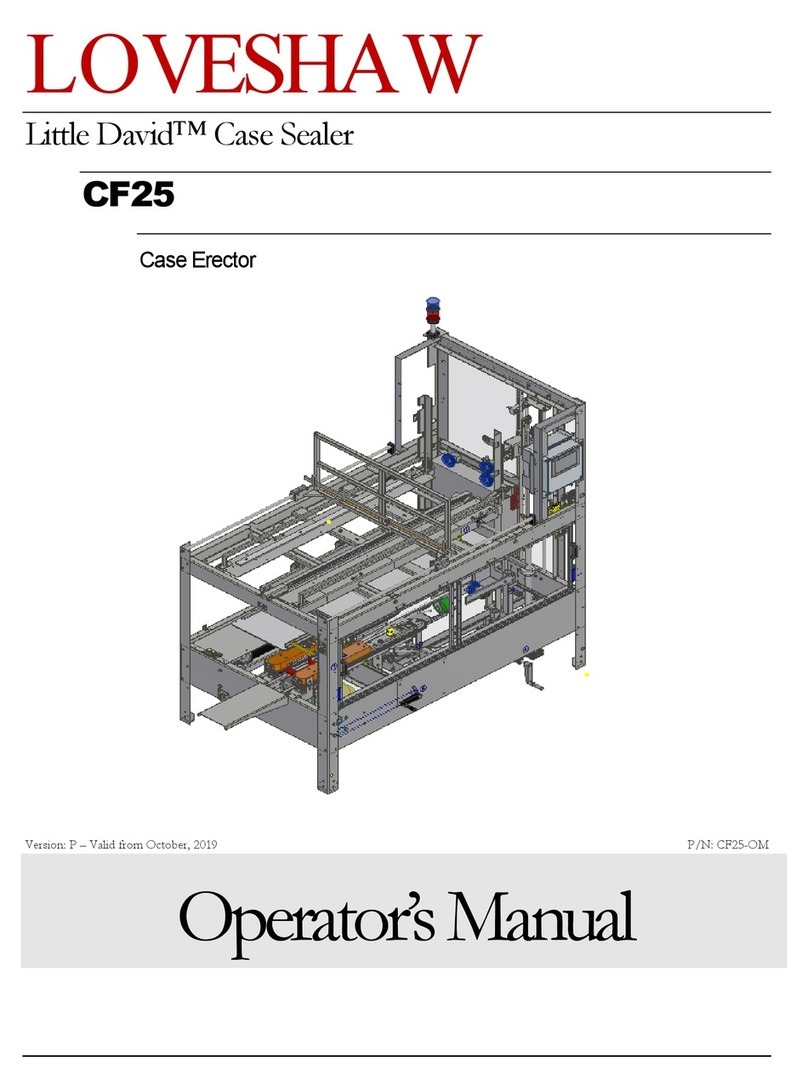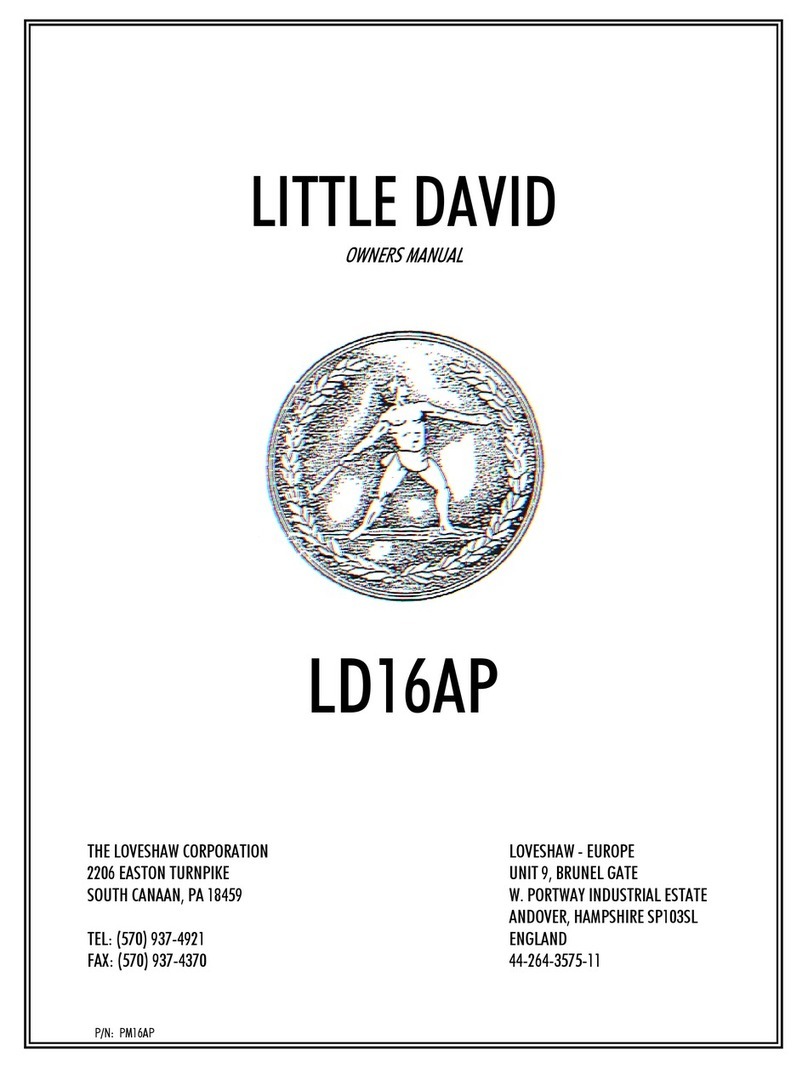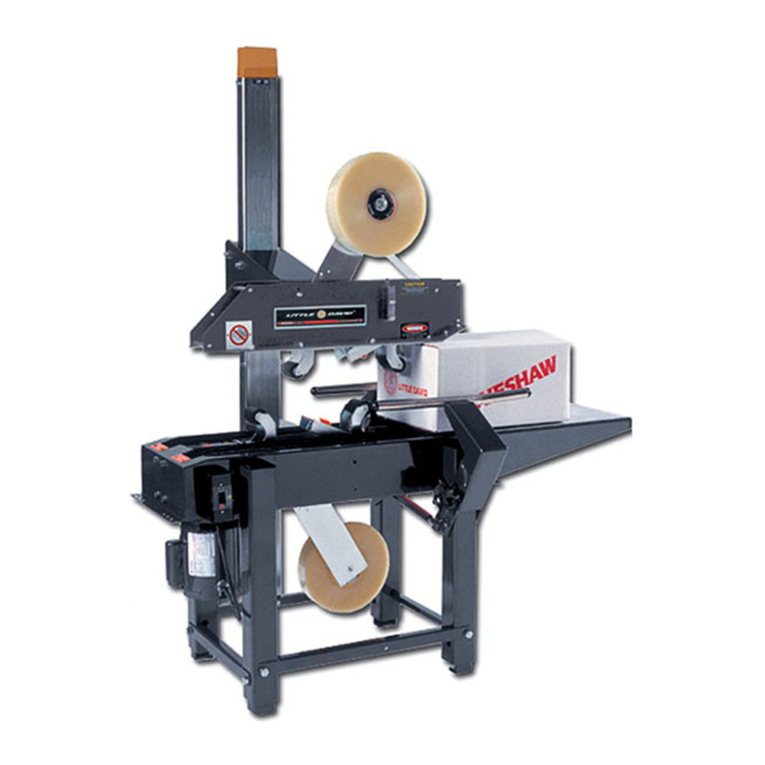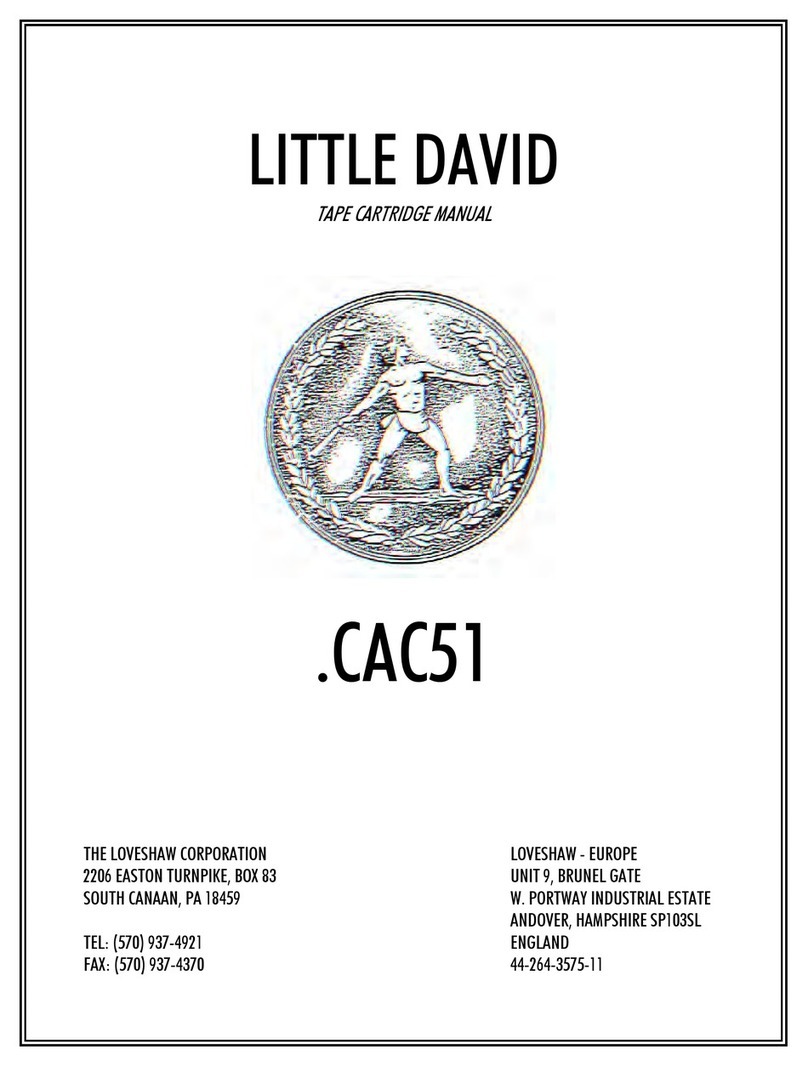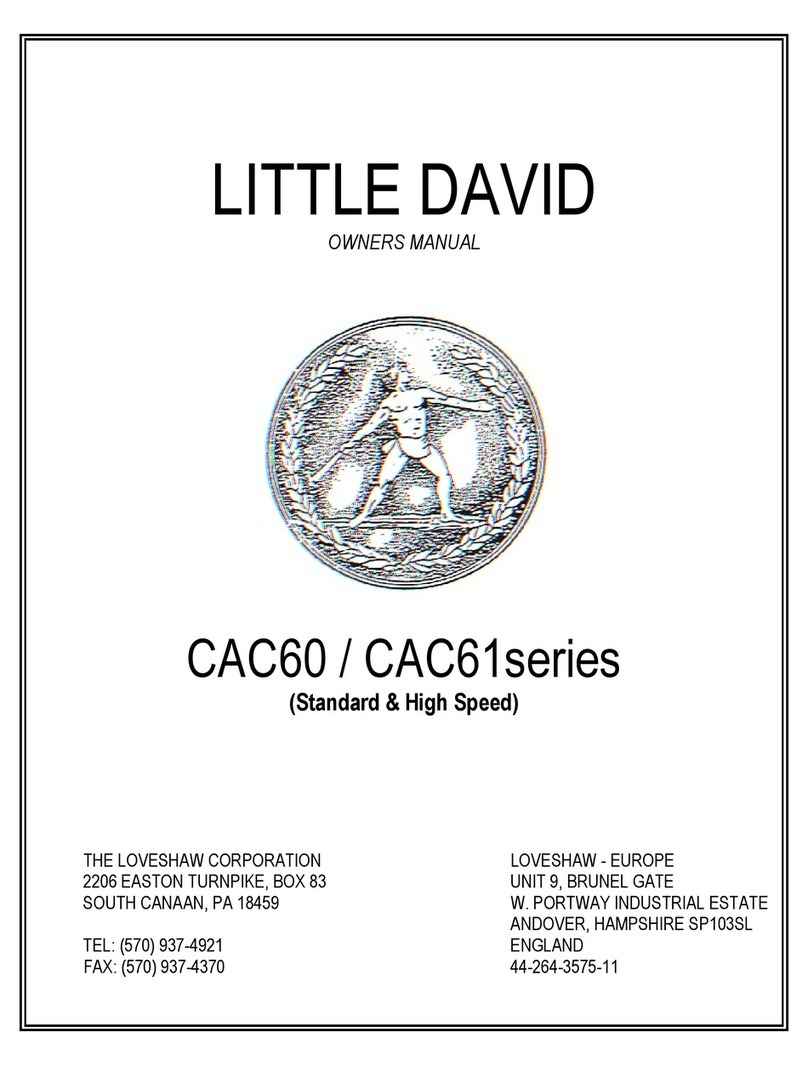
Operating Safety
Observe the warnings and cautions below when using the Little David LD16AR case sealer.
Within this manual all safety labels are depicted with location and part number. If a safety,
label is missing or not legible it must be replaced immediately. Failure to follow safety
labels can lead to injury or damage to the machine.
Instruction:RequirementtoSystemOperation
An electrical service must be hard wired to the main control panel. The main
enclosure has a door power disconnect.
Warning: Potential Bodily Injury
Always disconnect all sources of energy to the machine before performing maintenance.
Sources of energy include electrical and pneumatic. Refer to your company’s lock out
tag out procedures.
Never bypass or remove safety guards from the machine or tape cartridge.
Never override safety devices such as Emergency Stop switches.
Never adjust the machine or tape cartridges when the machine is operating.
Never place hands or body inside confines of the machine unless the machine has been
placed in an E-Stop condition.
Never wear jewelry, loose clothing, such as ties, scarves etc and long hair must be pulled
back when operating this machine.
Never pull a jammed box out of the machine while it is in operation. Stop machine and
raise head with the head raise button.
